Ear Pain
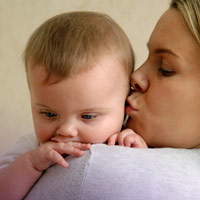 Ear pain is a frequent childhood complaint. Ear pain is not a medical emergency. If your child complains of ear pain after your doctor’s office is closed for the day, focus on their comfort and pain control and call the office during normal business hours. Your child may need to be seen by his/her doctor in order to discover the cause of the pain, and the diagnosis is most often not one that can be made over the phone. Tips for getting through the night can be found at the end of this section.
Ear pain is a frequent childhood complaint. Ear pain is not a medical emergency. If your child complains of ear pain after your doctor’s office is closed for the day, focus on their comfort and pain control and call the office during normal business hours. Your child may need to be seen by his/her doctor in order to discover the cause of the pain, and the diagnosis is most often not one that can be made over the phone. Tips for getting through the night can be found at the end of this section.
Why do children get ear pain?
If the ear canal is irritated or blocked this will cause ear pain. Anything that puts pressure on the eardrum will also cause pain or discomfort. Occasionally pain in the ear is actually referred pain from somewhere else – most commonly the mouth/teeth.
Common causes of Ear Pain:
Swimmer’s Ear (Outer Ear Infection/Otitis Externa)
This is caused by irritation from moisture/water contact. Symptoms include ear pain (often with a history of swimming recently, hence the name), sometimes swelling and itching, and occasionally drainage of pus from the ear. To prevent swimmer’s ear avoid the use of q-tips which often scratch and irritate the ear canal, dry the ears as thoroughly as possible after immersion in water, and use swimmer’s ear drops after swimming to help evaporate any water lodged in the canal. If you suspect your child has swimmer’s ear, call your pediatrician during normal business hours to schedule an appointment. If your child has otitis externa s/he will likely be given antibiotic eardrops and instructions to stay out of the water for 7-10 days.
Middle Ear Infection (Acute Otitis Media)
Causes: When fluid, for any reason, pools behind the eardrum for a period of time it creates an ideal environment for an infection to grow. The fluid puts pressure on the eardrum and this pressure causes pain. The cause of the initial fluid collection is usually allergies or a virus. Contact with water has no effect on a middle ear infection. Children are more prone to middle ear infections than adults because they get colds more often and the drainage from their ears, because of their anatomy, is less efficient.
Signs and symptoms If your child has had cough and congestion, and after a few days develops a fever, difficulty sleeping or feeding, becomes fussy, or, in older children, complains of ear pain, then an ear infection should be considered. If your child has pus or fluid draining, occasionally blood tinged, from his/her ear do not put any drops in the ear. The drainage is not a cause for concern and in the case of a middle ear infection you should notice your child’s pain relieved somewhat by the drainage. You can call your doctor during regular office hours.
What should you do? Follow the guidelines below to control your child’s pain, and call your doctor’s office during normal office hours.
Treatment If your child is over the age of two and his/her pain can be controlled your pediatrician might recommend you wait a few days before being seen. If your child is less than two years old it is likely your pediatrician would want to have you seen within a couple of days. This is because in a child less than two years of age it is more likely that an ear infection is bacterial and so will be treated with both pain control measures and antibiotics. In children over the age of two the likelihood of the infection resolving without antibiotics is greater than 75%. Because of this your pediatrician might recommend pain control alone, with a re-check or a prescription for antibiotics only if the pain is not controlled, or if your child still requires pain control after 3-5 days.
Contagiousness Ear Infections are not contagious. The colds that precede them pass from person to person, but each child’s body will handle the cold, and the fluid that follows, in a different way.
Prevention
- Vaccinate. The two most common bacterial causes of ear infections (and of pneumonia and meningitis) are Haemophilus and Pneumococcus. Vaccinated children (Hib and Prevnar vaccines) are protected against developing both types of meningitis and pneumonia, and as a bonus also do not develop as many bacterial ear infections.
- Avoid exposure to cigarette smoke.
- Feed your baby in an upright position. Lying down in the crib with a bottle of milk increases frequency of ear infections.
- Allergy prevention and control – If you know that your child has allergies, minimize his/her exposure to those allergens. If your child suffers from allergy symptoms speak to your doctor about treatment and prevention.
- Boost your child’s immunity – Breastfeeding in infants, balanced diet with a focus on fruits and vegetables in an older child. Ensure your child receives adequate sleep.
- Minimize colds. Consider a smaller versus a larger daycare if your young child or infant has many colds leading to ear infections. Children will all eventually have most of the childhood viruses, but if your child is prone to ear infections at a young age leading to many courses of antibiotics, it might be better for him/her to get those colds when s/he is older and anatomy works in his/her favor (smaller adenoids, larger and more angled eustacian tubes).
- Drain fluid during a cold. Steam, nasal saline, bulb syringe (see Cough and Cold Treatment page).
Teething
Referred pain is when pain from one area is felt in a different area. This is very common with tooth and ear pain. A teething child might bat at his/her ears because a young child has difficulty localizing pain. If your child is between the ages of 3 months to 2 years, teething is usually a consideration. Often a teething infant will be drooling, chewing on just about, and might be fussier than normal with more nighttime awakenings. Teething does not cause a fever over 101 degrees.
Treatment
- Something firm or cold to chew on. Teething rings- refrigerated or frozen work best, or a frozen wet washcloth will allow your infant to rub and numb the areas most irritating him/her.
- Teething tablets. Hyland’s teething tablets -safe and the most popular and frequently used tablets for teething relief in infants.
- Teething Gels. Numbing gels (like orajel) do provide pain relief but should be used with some caution. It is easy to use too much and numbing of the tongue or lips can be dangerous to a young infant. If you do choose to use a numbing gel, put a small amount on a q-tip and rub onto only the bulging area of the gums.
- Acetaminophen or Ibuprofen. This should be your last resort because the medication goes all through your child’s body, not just to his/her mouth, and it is often more than you need. But if all else fails you can use this as your occasional back-up safety net! (see medication dosage chart for dosing)
Getting through the night/ Pain Control
If you suspect the pain is caused by teething follow above instructions. If this seems to be true ear pain, pain control should be your priority. Antibiotics do not improve the pain in a true bacterial ear infection for at least 24-48 hours, so all children, whether or not you suspect a true bacterial infection, should be treated with pain control and made to feel comfortable when they have ear pain!
- Topical (not to be used if there is ear drainage):
- Over the counter ear pain relief/anesthetic drops
- Garlic oil drops
- Your doctor may choose to prescribe pain control ear drops if you speak to him/her during regular office hours and the homeopathic and over-the-counter ear drops are not effective.
- Oral: Acetaminophen or Ibuprofen (see medication dosing page)
- Other: Sleeping on an increased angle (in children old enough to be sleeping on a pillow- use two!) or with the sore ear facing upward, warm compresses to the affected ear.
-Monique Araya, MD, FAAP
The medical information on this Web site is provided for educational purposes only. The information provided in this site, or through linkages to other sites, is not a substitute for medical or professional care, and you should not use the information in place of a visit, call consultation or the advice of your physician or other healthcare provider.
If you believe you have a medical emergency you should call 911 or your physician immediately. If you have any questions regarding your health or a medical condition, you should promptly consult your physician.
- Accidental Poisoning
- Bites and Stings
- Burns (and sunburns)
- Childhood Asthma
- Colic and Crying Babies
- Constipation in Children
- Cough & Cold
- Diaper Rash
- Diarrhea
- Ear Pain
- Fever
- Head Trauma and Head Injuries
- Kids and Allergies
- Lice
- Medication Dosages
- Nosebleeds in Children
- Pink Eye and Styes
- Rash
- Scrapes, Cuts and Stitches
- Sudden/Acute Abdominal Pain
- Treating a Common Cold Cough
- Vomiting and Nausea
 High Viral Loads Make Kids ‘Silent Spreaders’ of COVID-19
High Viral Loads Make Kids ‘Silent Spreaders’ of COVID-19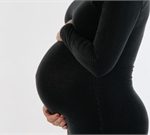 Clotting Tied to COVID-19 May Harm the Placenta
Clotting Tied to COVID-19 May Harm the Placenta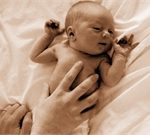 ‘Kangaroo Care’ Has Big Health Benefits For Preemies
‘Kangaroo Care’ Has Big Health Benefits For Preemies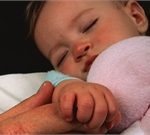 Babies Are Spared Severe COVID-19 Symptoms
Babies Are Spared Severe COVID-19 Symptoms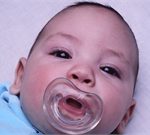 Sleepless Babies May Face Emotional Troubles as Kids
Sleepless Babies May Face Emotional Troubles as Kids